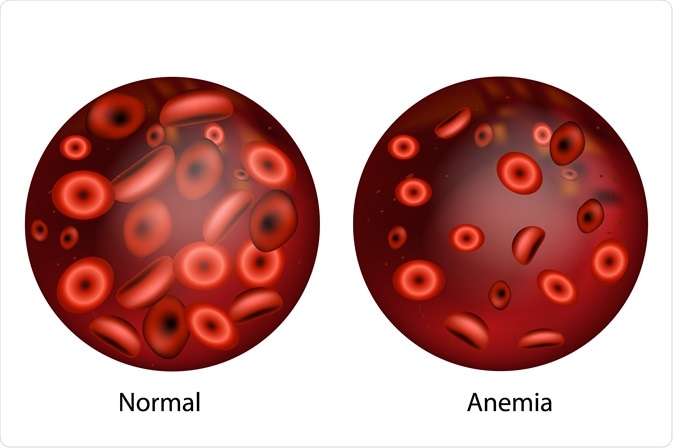Fanconi anemia is a genetic condition that affects DNA repair enzymes and therefore many parts of the body. It is the most common disease among what are referred to as inherited bone marrow failure syndromes (IBMFS).
 Image Credit: Sakurra / Shutterstock.com
Image Credit: Sakurra / Shutterstock.com
DNA repair enzymes achieve repair of damaged DNA by removing defective interstrand cross-links, which are opposing strands of DNA that are covalently linked and interfere with important cellular processes such as replication and transcription. People with Fanconi anemia may develop bone marrow failure, organ defects and other physical abnormalities. They are also at an increased risk of cancer.
The condition affects around 1 in 350,000 births and is more common among Ashkenazi Jews and Afrikaners. This condition was originally described in 1927 by Swiss pediatrician Guido Fanconi, after whom it is named. Most individuals who develop this condition are diagnosed before the age of 7, but about 10% are diagnosed when they are adults.
Around 90% of people with this condition have impaired bone marrow function, which causes a decrease in the production of all types of blood cells. Usually, the bone marrow produces red blood cells needed for the transport of oxygen, white blood cells required to fight infection and platelets which are needed for blood clotting.
People with bone marrow failure, therefore, suffer from fatigue due to a low red blood cell count, an increased rate of infection due to a low white blood cell count, and poor blood clotting ability due to a reduced platelet number. Affected individuals can also develop myelodysplastic syndrome, where immature blood cells do not develop normally.
Some of the problems that develop in people with Fanconi anemia are described in more detail below.
Fanconi anemia, Causes, Signs and Symptoms, Diagnosis and Treatment.
Physical abnormalities
Around three-quarters of those who develop Fanconi anemia have physical abnormalities that may be relatively subtle. Examples include:
- Low birth weight and size for age
- The presence of café-au-lait spots
- Triangular shaped face
- Deafness
- Microcephaly
- Structural abnormality of the thumbs, finger or toes
- Cardiac and renal abnormalities
Hematologic disease
This usually presents as the following during childhood:
- Increased susceptibility to infection
- Anemia
- Tendency to bleed easily
- Around 10% develop leukemia
- Around 5% develop myelodysplastic syndrome
Solid tumors
By the age of 40 to 50 years, around 25 to 30% of affected individuals have developed solid tumors, with the incidence increasing as patients become older. Examples of these tumors include the following:
- Hepatomas mainly develop in those who have been treated with androgen therapy
- Bone marrow transplantation can increase the risk of oral cancers
- Carrier grandmothers have been shown to be at an increased risk of breast cancer
- Head and neck tumors are more likely to occur
- Esophageal and genital tumors are more likely to occur
Outcomes
Research has shown a variable mean survival of between 14 and 25 years, which is probably due to the widely different phenotypes between people with Fanconi anemia. Research has suggested that some phenotypes are associated with a much better prognosis than others.
Although survival rates vary between individuals, people with low blood counts do have a poor prognosis and treatments such as bone marrow transplants have improved survival. However, even after a successful bone marrow transplant, these patients are at an increased risk of developing solid tumors and should be regularly monitored.
References
Further Reading